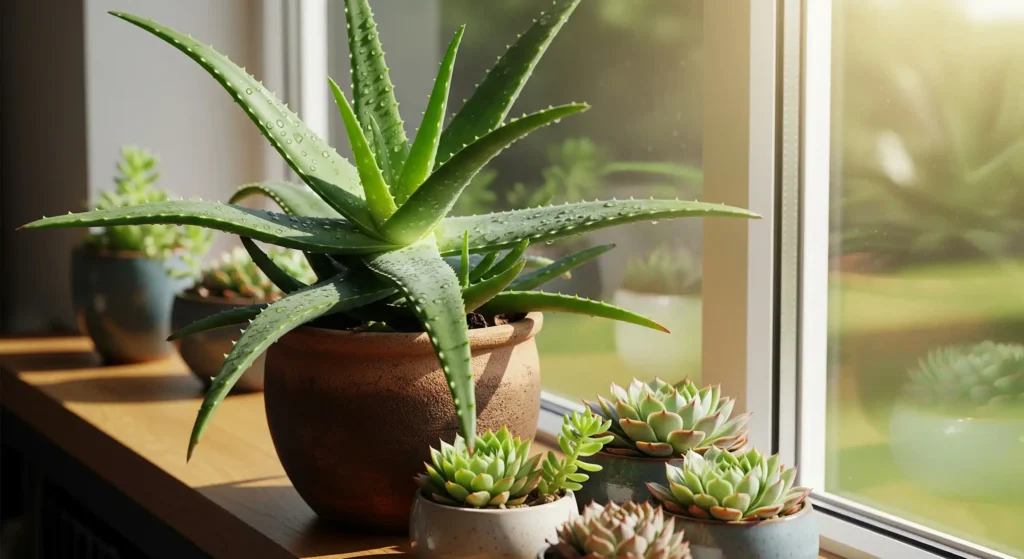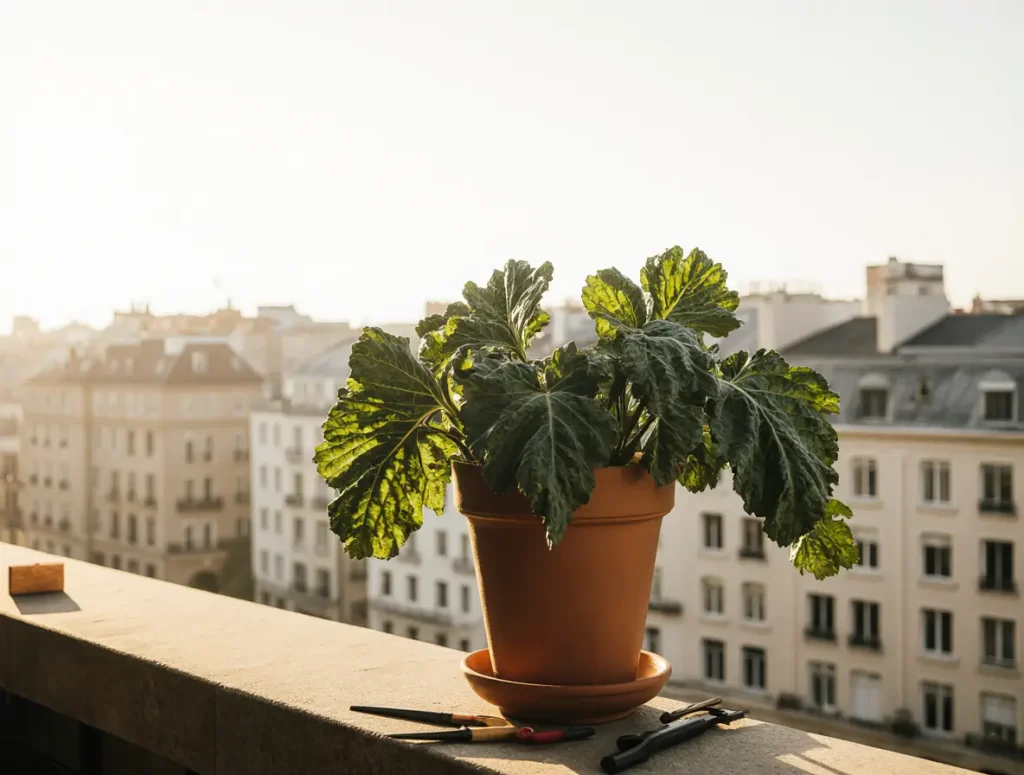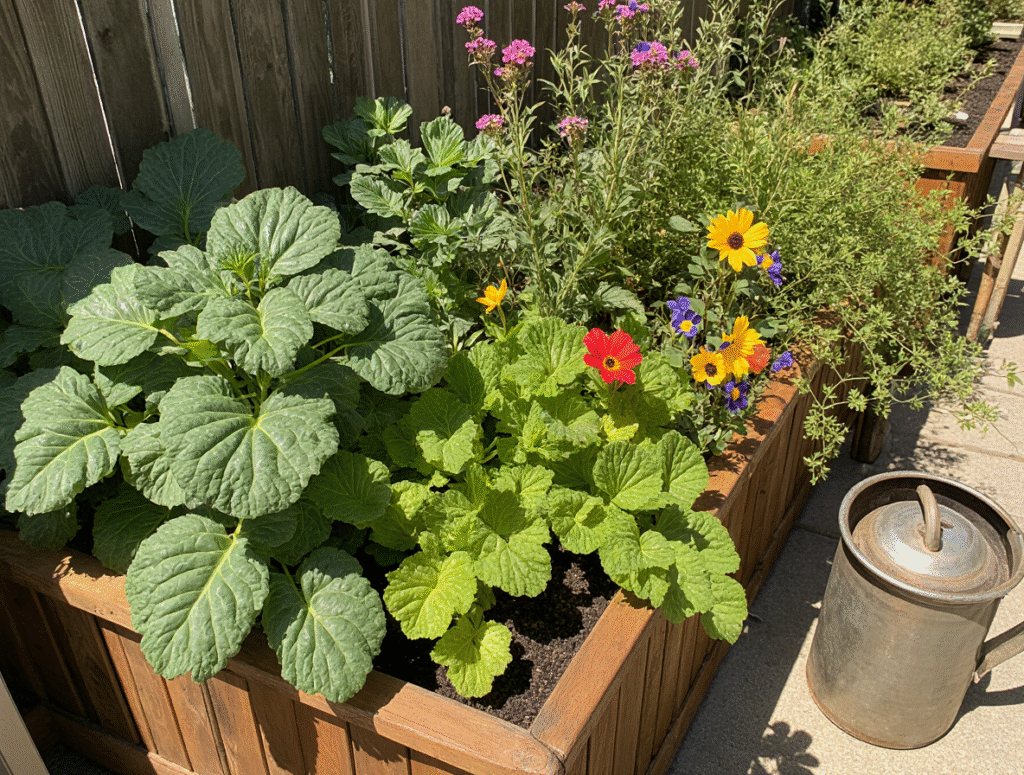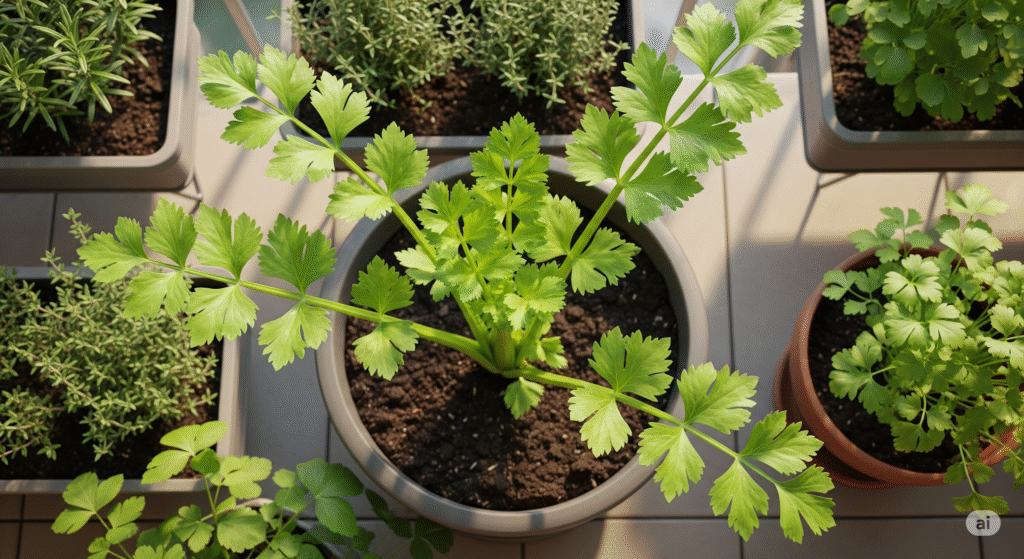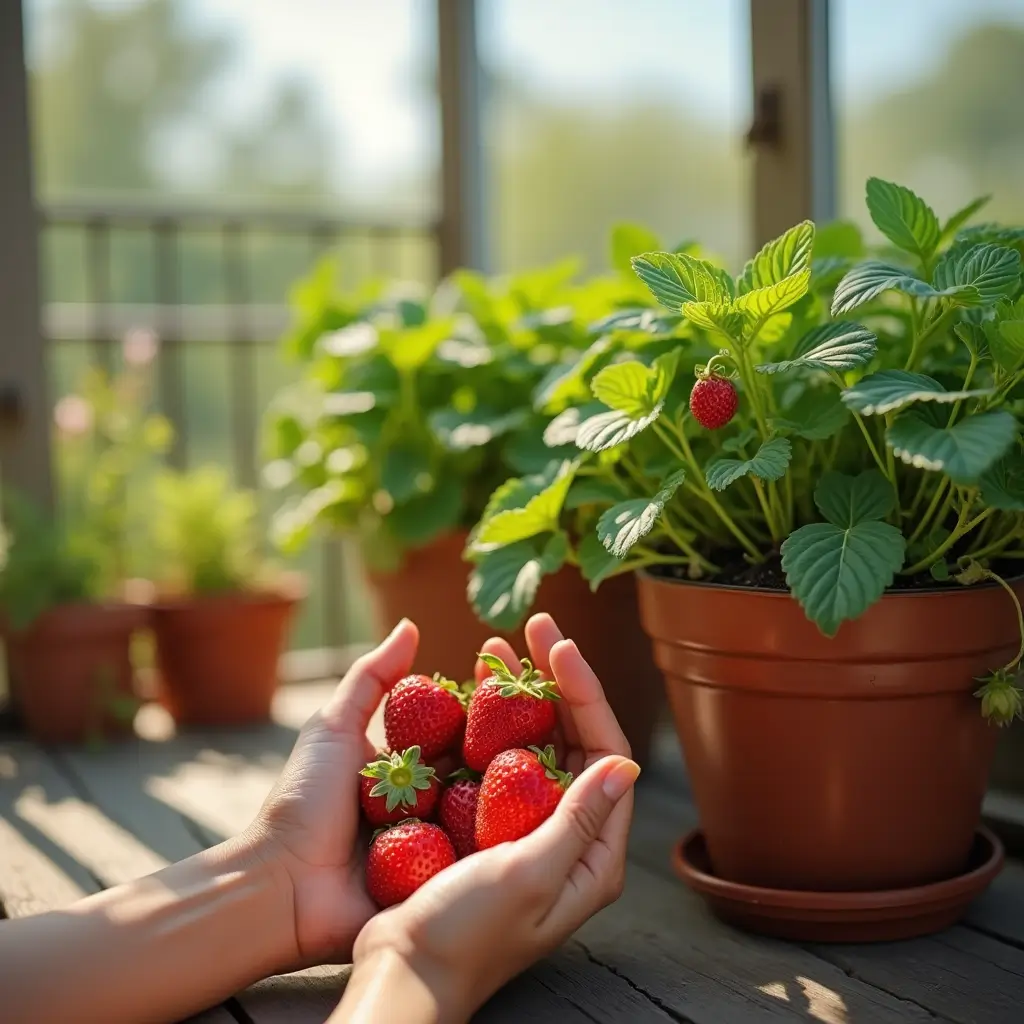
Growing Strawberries in Pots: The Ultimate Guide to Thriving Strawberry Plants
Imagine stepping outside on a warm, sunny day and picking a ripe, sweet strawberry from your very own balcony or patio garden. The joy of growing strawberries in pots is not just about the fresh, delicious fruit; it’s about cultivating a rewarding, hands-on experience that brings you closer to nature. You don’t need a sprawling garden to enjoy homegrown strawberries—container gardening offers an excellent solution for small spaces, balconies, or even indoors. In this comprehensive guide, you’ll learn everything you need to know to grow thriving strawberry plants in pots, from selecting the best varieties to harvesting your sweet fruit.
Quick Facts About Growing Strawberries in Pots
- Space-saving: Strawberries can be grown in small pots, hanging baskets, or even vertical garden systems.
- Sunlight: Strawberries require at least 6-8 hours of sunlight per day to thrive.
- Watering: Regular watering is key, but avoid letting the pots sit in water.
- Fertilizing: Use a balanced, slow-release fertilizer for optimal fruit production.
- Harvesting: Strawberries are ready to harvest when they are fully red, plump, and firm.
Why Grow Strawberries in Pots?
Benefits of Container Gardening for Strawberries
Growing strawberries in pots is one of the best ways to enjoy fresh, homegrown fruit in small spaces. By growing strawberries in pots, you can easily manage your plants, control soil quality, and even move your pots to find the best sunlight. Whether you’re new to container gardening or an experienced gardener, growing strawberries in pots provides an excellent solution for enjoying this delicious fruit, even in limited space.
- Space-saving: Whether you live in an apartment with a small balcony or have a limited garden space, pots allow you to grow strawberries in virtually any area.
- Mobility: Containers are portable, so you can move your strawberry plants to catch more sunlight or protect them from harsh weather.
- Better pest control: Container-grown strawberries are less susceptible to pests that thrive in garden soil, allowing for healthier plants.
- Improved soil and water management: With pots, you have full control over the soil quality and drainage, preventing issues like root rot.
In addition to these benefits, growing strawberries in pots can help you extend your growing season. When properly cared for, your plants can thrive for months, offering you fresh strawberries from early spring through late fall.
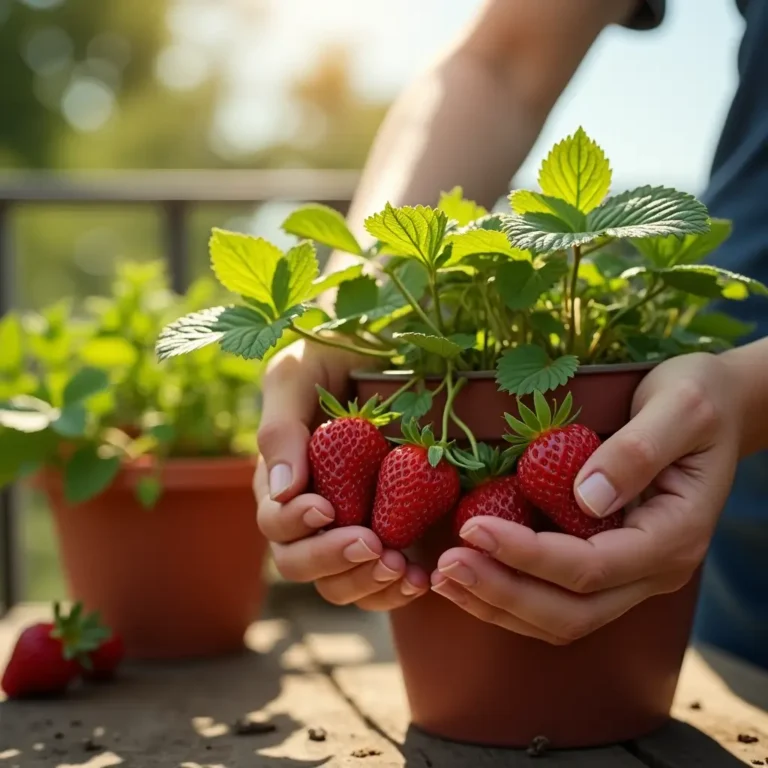
Choosing the Right Pots for Your Strawberries
Selecting the right pot is crucial for the success of your strawberry plants. The pot size and material can affect the overall health and productivity of your plants, so it’s important to choose wisely.
Pot Size
Strawberries need plenty of space for their roots to grow, so it’s essential to choose a pot that is large enough. A pot that’s at least 10 inches (25 cm) in diameter and has a depth of around 8-12 inches (20-30 cm) is ideal. Smaller pots may restrict the growth of your strawberry plants, leading to poor fruit production. Bigger pots can hold more soil, retain moisture better, and provide ample room for root expansion.
Pot Material
There are several material options to consider when choosing a container for your strawberries:
- Plastic Pots: These are lightweight, affordable, and help retain moisture. They’re an excellent option for beginners or those who want to easily move their plants.
- Terracotta Pots: Known for being porous, terracotta pots allow for better airflow to the roots, which helps prevent root rot. However, they dry out faster than plastic, so they require more frequent watering.
- Wooden Planters: These pots offer a rustic, natural look and are great for larger strawberry patches. They provide good insulation, protecting the roots from temperature fluctuations.
- Hanging Baskets: If you’re tight on space, hanging baskets are an excellent way to grow strawberries vertically. They also keep the berries off the ground, which can prevent pests.
Drainage
Good drainage is essential for growing strawberries in pots. Without proper drainage, the water will accumulate at the bottom of the pot, leading to root rot and other problems. Always choose a pot with drainage holes to allow excess water to escape.
Selecting the Best Strawberry Varieties for Pots
Not all strawberry varieties are suitable for container growing. It’s important to choose varieties that thrive in pots and are easy to care for. There are three main types of strawberries you can grow in containers: June-bearing, everbearing, and day-neutral. Each type has unique characteristics, so let’s take a closer look at the best options for your pots.
June-Bearing Strawberries
June-bearing strawberries produce large, flavorful berries in late spring or early summer. These varieties typically yield one large harvest per season, making them perfect if you want a concentrated harvest to make jams or preserves. However, they require more space, so choose larger pots or containers with multiple plants to get the best yield.
Everbearing Strawberries
Everbearing strawberries produce fruit continuously throughout the growing season, with smaller but equally delicious berries. These varieties are perfect for growing in pots because they tend to be more compact and can produce fruit throughout the summer and into the fall.
Day-Neutral Strawberries
Day-neutral strawberries are perfect for container gardening. These varieties produce fruit regardless of the day length, meaning they can bear fruit throughout the entire growing season, providing consistent harvests. They are usually smaller plants, which makes them great for smaller pots and patios.
Best Varieties for Pots
- Alpine Strawberries: Small, flavorful berries ideal for containers.
- Seascape Strawberries: Everbearing, compact plants that do well in pots.
- Quinault Strawberries: Day-neutral, high-yielding strawberries perfect for smaller spaces.
How to Plant Strawberries in Pots
Planting strawberries in pots is straightforward, but there are a few key steps to ensure success.
Preparing the Soil
Strawberries need well-draining soil with plenty of nutrients. Using a high-quality potting mix specifically designed for container gardening is essential. You can enhance the soil by adding compost to improve drainage and fertility. Avoid using garden soil, as it may not drain properly in a pot.
Planting Depth
When planting strawberries, make sure the crown of the plant—the point where the leaves and roots meet—sits just above the soil level. If you bury the crown too deep, it can lead to rot. On the other hand, if it’s exposed above the soil, the plant may dry out.
Spacing Your Plants
If you’re planting multiple strawberry plants in one pot, space them out by about 6-8 inches (15-20 cm) apart. This gives each plant enough room to grow and receive adequate sunlight.
Keeping Strawberries Healthy: A Monthly Care Calendar
To keep your strawberry plants thriving throughout the growing season, it’s important to follow a regular care schedule. Here’s a simple month-by-month calendar to guide you in keeping your strawberries healthy and productive.
| Month | Task |
|---|---|
| Spring (March-May) | – Plant strawberries in well-drained pots. – Begin regular watering. – Apply balanced fertilizer. |
| Summer (June-August) | – Water consistently and check for pests. – Harvest ripe strawberries. – Remove dead or yellowing leaves. |
| Fall (September-November) | – Continue harvesting if you’re growing everbearing or day-neutral varieties. – Prune back plants after fruiting. – Prepare for winter by moving pots to a sheltered spot if necessary. |
| Winter (December-February) | – Avoid watering unless the soil becomes dry. – Ensure your pots are protected from freezing temperatures (move indoors or use frost covers). |
Caring for Your Strawberry Plants
Proper care is essential for growing healthy strawberries in pots. Here are some key factors to keep in mind.
Watering
Strawberries need consistent moisture, especially in containers. Ensure the soil is kept moist but not soggy. Water your plants thoroughly when the top of the soil feels dry. Avoid letting the plants sit in standing water, as this can cause root rot.
Fertilizing
Strawberries are heavy feeders, so providing them with the right nutrients is important for a healthy harvest. Use a balanced slow-release fertilizer that contains nitrogen, phosphorus, and potassium. Fertilize your plants once a month during the growing season, and use organic compost to provide additional nutrients.
Pruning and Deadheading
Pruning and deadheading can help encourage new growth and improve fruit production. Remove any dead or yellowing leaves regularly, and cut off any runners (long, trailing stems) to redirect the plant’s energy toward producing fruit. This is especially important for everbearing and day-neutral varieties.

Troubleshooting Common Strawberry Problems in Pots
Even with the best care, you may encounter some common issues while growing strawberries in pots. Here are a few things to look out for:
Pests
- Aphids: These small insects can weaken your plants by sucking out the sap. Use organic insecticidal soap to remove them.
- Slugs and Snails: These pests love strawberries, so consider using barriers like copper tape or diatomaceous earth around the base of your pots.
- Spider Mites: If you notice yellowing or speckled leaves, spider mites might be the culprit. Neem oil can help control these pests.
Diseases
- Powdery Mildew: This fungal disease appears as white powdery spots on the leaves. Remove infected leaves and avoid overhead watering to reduce humidity around the plant.
- Root Rot: If your plants are yellowing or wilting, check for root rot, which is caused by overwatering. Ensure your pots have good drainage and that you’re not watering too frequently.
Poor Fruit Production
If your strawberry plants aren’t producing fruit, it could be due to several factors, such as lack of sunlight, overcrowding, or improper watering. Ensure your plants are receiving at least 6-8 hours of sunlight each day and that they’re spaced correctly to allow air circulation.
Harvesting and Storing Your Strawberries
After months of hard work, it’s time to harvest the fruits of your labor! Here’s how to tell when your strawberries are ready to pick:
- Color: Ripe strawberries are fully red with no green or white areas.
- Size: Fully developed strawberries are plump and firm.
- Taste: The best way to tell if a strawberry is ripe is by tasting it!
Storing Your Strawberries
Once you’ve harvested your strawberries, store them in a cool, dry place. If you have too many berries to eat immediately, refrigerate them for a few days. For longer storage, you can freeze your strawberries for use in smoothies, jams, or desserts.
FAQ: Growing Strawberries in Pots
1. Can strawberries grow in small pots?
Yes! Strawberries can grow well in small pots, but ensure they’re at least 10 inches in diameter and have proper drainage to prevent root rot.
2. How often should I water strawberries in pots?
Water your strawberries when the top of the soil feels dry, ensuring the water drains freely from the bottom of the pot.
3. What is the best time of year to plant strawberries in pots?
Early spring is the best time to plant strawberries in pots. However, you can also plant everbearing and day-neutral varieties in late summer for a fall harvest.
4. Why aren’t my strawberries producing fruit?
Lack of sunlight, improper watering, overcrowding, or nutrient deficiencies can affect fruit production. Ensure your plants are getting at least 6-8 hours of sunlight and space them correctly.
Conclusion: Enjoy Your Own Homegrown Strawberries
Growing strawberries in pots is a rewarding and accessible way to enjoy fresh, homegrown fruit. With the right care, the right pot, and a little patience, you can harvest sweet, juicy strawberries throughout the growing season. Whether you’re a beginner gardener or an experienced one, this guide provides you with everything you need to know to grow strawberries in pots successfully.
Now it’s time to get started on your own strawberry-growing journey. Choose your pots, select your favorite variety, and begin planting. Soon, you’ll be able to enjoy the joy of picking ripe, fresh strawberries right from your own garden.
You Might Like

